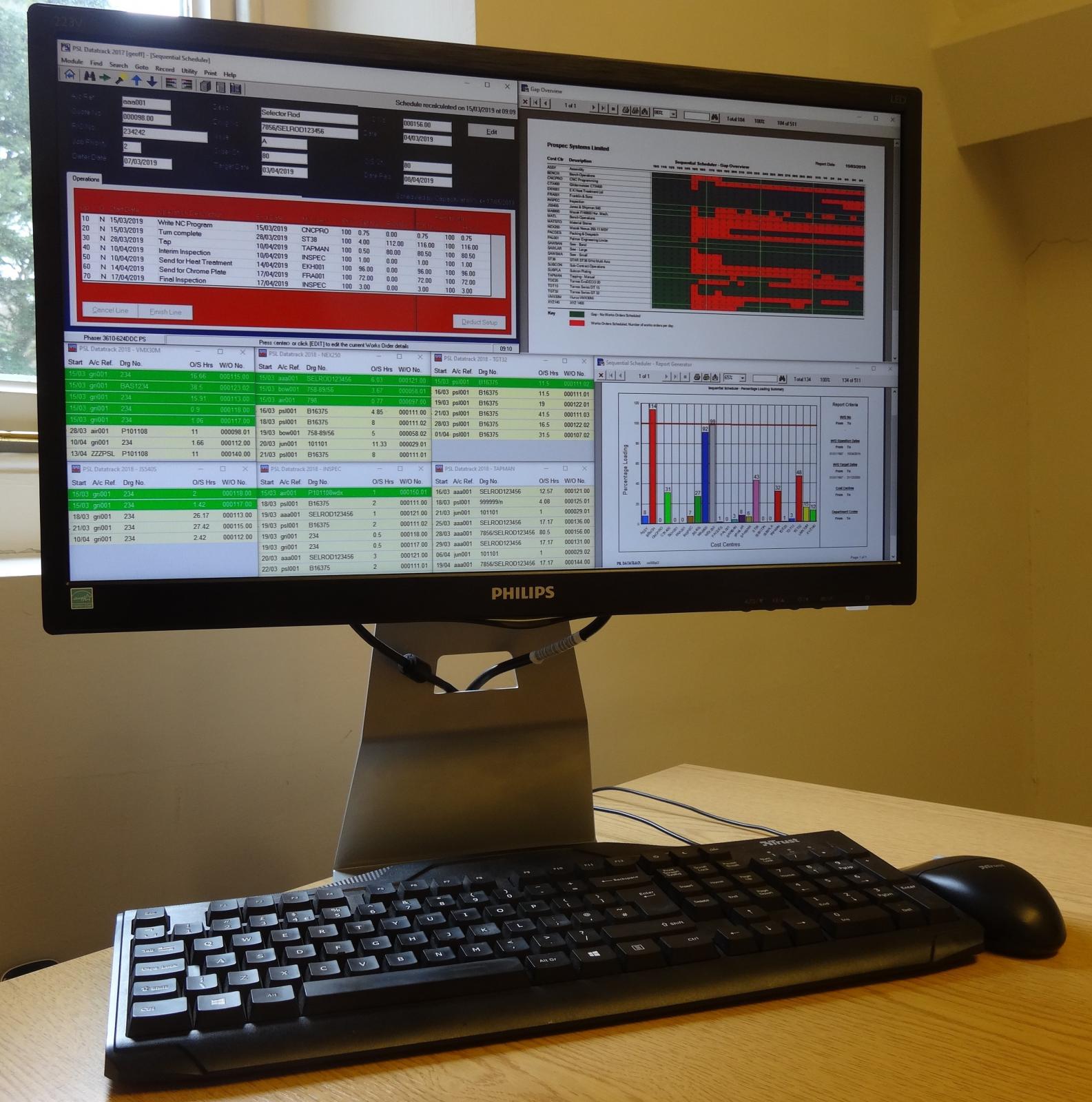
A new development in PSL Datatrack’s Schedular module takes into account complex factors to show exactly what can be achieved in lights out running.
PSL Datatrack’s Scheduler module allows users to plan and maximise the production flow throughout an entire factory, by ensuring that jobs on the shop floor are correctly prioritised and the required materials are always available.
However, knowing exactly how much work can actually be processed when taking into account factors such as lights out running and varying shift patterns, as well as capacity, is more complex. Now, a new development in the Scheduler, for lights out running, streamlines the process by showing users exactly what can be achieved.
The Scheduler automatically sets out each operation to provide a realistic representation of the production work flow. The scheduled dates for each process step are calculated based on either the target date for an order to be despatched or on available production capacity.
If calculated by target date, the system will report the latest start and end dates for each required operation to complete the job on time. If calculated by capacity, the system will tell the user the earliest available start and end dates. An estimated date for the completion of the final operation can then be compared to the target date, providing an early warning of jobs that could potentially be late. Reports on real-time production status can be generated then pre-emptive actions and an instant recalculation of the entire schedule can be taken, if necessary.
Many PSL Datatrack customers are finding the Scheduler highly beneficial. “Weekly production meetings are a much simpler affair as all staff have access to what is happening at any time just by logging in,” says Nick Baller, Managing Director at APT Leicester Ltd. It can also allow companies to assess the impact of taking on new business. “It recently allowed us to determine the impact of taking on our biggest order to date in terms of what capacity we had for other customers and what additional shifts we needed,” says Simon Fisher of Machining Technology (Mach-Tech) Ltd.
Indeed, shift patterns within a company may not always correspond with the production time that is expected to be needed for a particular job. If, for example, a company is running single or double shifts or gaining from lights out running, it can be hard to estimate exactly how much time will be required for any specific job. Now, however, the Scheduler can take into account lights out running on relevant operations to provide a highly accurate production schedule. Individual operations can be pre-set to overlap if necessary and by how much for each operation. This enables the Scheduler to provide an accurate scheduling forecast by taking into account both shift patterns and lights out running.
The reports that can be generated through the Scheduler are available in the form of lists and graphs, offering many benefits both to a company’s management team and also to their customers. For example, the ‘Work-To-List’ shows the sequence in which operations should be performed within a given cost centre. Graphical reports, such as the Gantt Chart, help with early identification of production bottlenecks and provide relevant information to make management aware of potential problems before they arise, enabling informed decision making. “The reports give us an excellent view of production in real time and enable us to give information to our customers on delivery times and priorities,” says Nick Baller.
The Scheduler Listing Screen provides fast flexible filtering of production operation records and shows exactly the information required, including outstanding quantity and hours remaining. In order to gain maximum benefit from the Scheduler, the Shop Floor Data Collection (SFDC) module is recommended to provide a record of the progress made throughout each operation of a process. It collects production information from the shop floor, giving the ability to automatically update the Scheduler without the need to manually retype any information.
Data from the Scheduler can be shown around a factory on Status Boards, which show shop floor operatives which works orders are scheduled and when for. Seychell Engineering has added several ‘Work-To-List’ Status Boards that show each machine operator their current and next jobs, so if they are carrying out a machining operation they can also see what the next job is and prepare to load it straight on to the relevant machine. Information is readily available to everyone at a glance, thereby closing the loop: there is no point scheduling if nobody knows what the schedule is. Status Boards make it clear.
“By taking all the information from the Scheduler, telling us what to do and when to do it on a dynamic visual display is an essential means of communication. The Status Boards have been well embraced by everyone. Our business is run on Key Performance Indicators (KPIs) and achieving those is much easier with PSL Datatrack. It makes the whole business more efficient,” says Seychell owner Roger Williams.